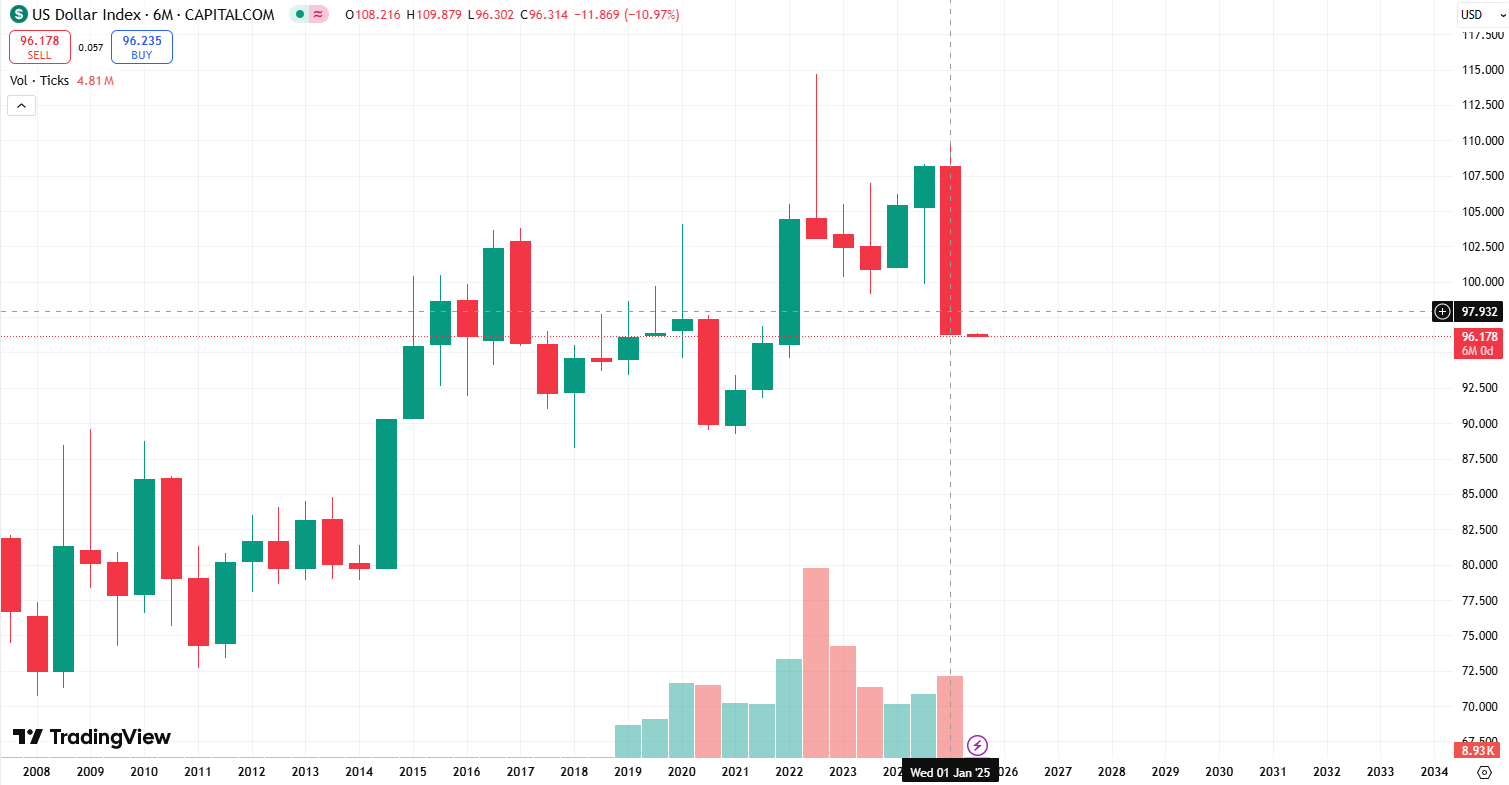- Tesla Stock Hits Record High as Robotaxi Tests Ignite Market. Why Is Goldman Sachs Pouring Cold Water on Tesla?
- Gold Price Hits New High: Has Bitcoin Fully Declined?
- Gold jumps above $4,440 as geopolitical flare, Fed cut bets mount
- U.S. November CPI: How Will Inflation Fluctuations Transmit to US Stocks? Tariffs Are the Key!
- US Q3 GDP Released, Will US Stocks See a "Santa Claus Rally"?【The week ahead】
- December Santa Claus Rally: New highs in sight for US and European stocks?

The dollar experienced its weakest first half in more than 50 years, hurt by geopolitical tensions and former President Donald Trump's trade policies.
The dollar index, which measures the value of the greenback against the world's major traded currencies, has plunged 10.97% since January 2025, hitting its lowest level since March 2022. Meanwhile, the dollar index had its worst first-half performance since 1973.

Source: TradingView
The dollar's weakness has helped other currencies appreciate. For example, the British pound surged from $1.25 to a three-year high of $1.37 against the dollar. The euro strengthened against the dollar, breaking through 1.1700 to a more than four-year high.
Investors are wary of Trump's economic agenda, especially his "One Big Beautiful Bill," which economists predict will push up U.S. national debt further. Rising U.S. debt levels and proposed tariffs have deepened investor concerns about the dollar as a safe-haven currency.
"Trump's tariffs, the fact that many investors see his administration as somewhat chaotic, and concerns about U.S. Treasuries have caused the dollar to fall out of favor," said David Morrison, senior market analyst at financial services firm Trade Nation.
Trump's criticism of Fed Chairman Jerome Powell and hints of a more dovish successor have fueled expectations of a Fed rate cut, which has further pressured the dollar.
ING analysts, looking ahead, the short-term dollar trend seems almost entirely dependent on the Fed, and even the current July 9 tariff deadline seems to be secondary.
The market expects the Fed to cut interest rates in September, and despite the Fed's cautious stance, there is a one-in-five chance of a July rate cut. However, two FOMC members have publicly discussed a July rate cut, and if Thursday's employment data disappoints, it may trigger a new round of dollar selling.
ING analysts further pointed out that the risks facing the dollar remain skewed to the downside, with job growth expected to gradually slow and inflation to rise in the coming months, which means that market expectations for dovish sentiment have been too high. The market may eventually digest the September rate cut, and the dollar should see some support in the short term. Conversely, even without the OBBBA and tariffs, a significantly disappointing jobs report could cause the US dollar index to fall below 96.0.
Read more
Before making any trading decisions, it is important to equip yourself with sufficient fundamental knowledge, have a comprehensive understanding of market trends, be aware of risks and hidden costs, carefully consider investment targets, level of experience, risk appetite, and seek professional advice if necessary.
Furthermore, the content of this article is solely the author's personal opinion and does not necessarily constitute investment advice. The content of this article is for reference purposes only, and readers should not use this article as a basis for any investment decisions.
Investors should not rely on this information as a substitute for independent judgment or make decisions solely based on this information. It does not constitute any trading activity and does not guarantee any profits in trading.
If you have any inquiries regarding the data, information, or content related to Mitrade in this article, please contact us via email: insights@mitrade.com. The Mitrade team will carefully review the content to continue improving the quality of the article.

